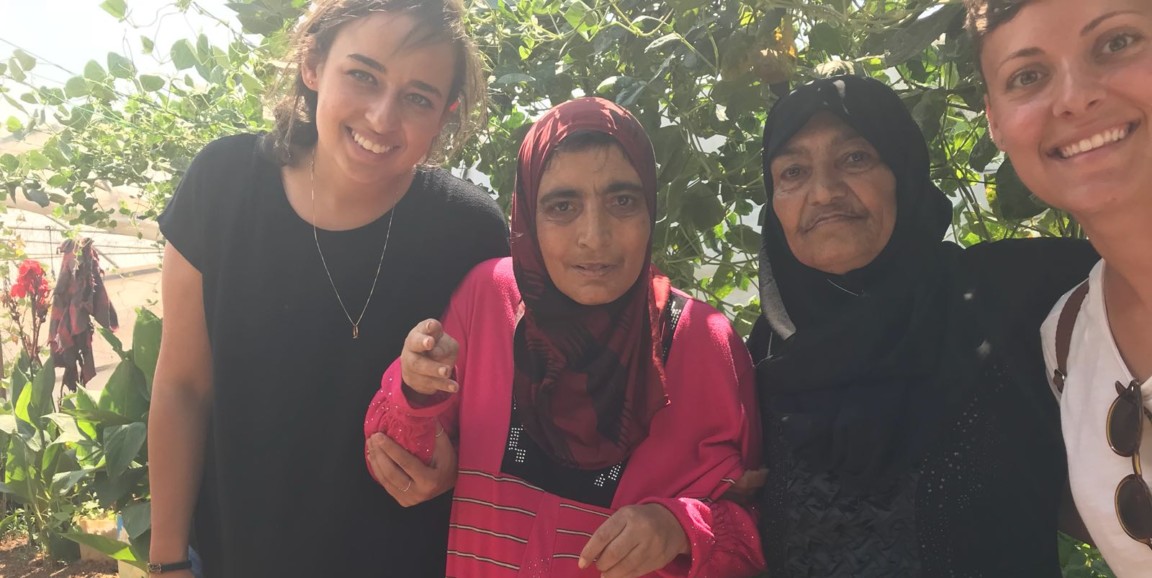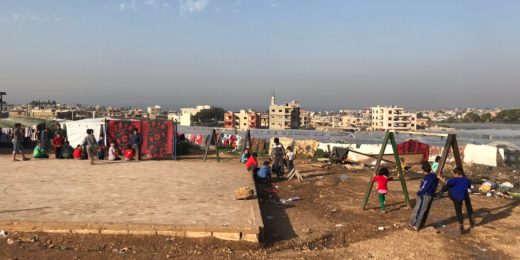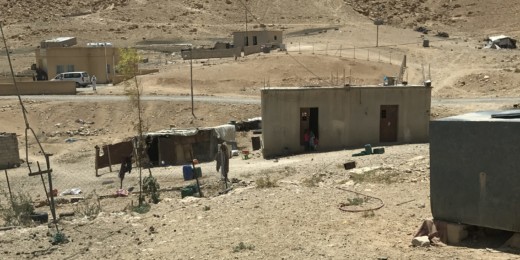Hayat, 46, in pink above, is from a village near Homs in Syria, although she now calls Akkar, Lebanon home. When she was in Syria, assailants came into her home and burned her children and husband to death in front of her. They hit her on the head, leaving her with a traumatic brain injury, and then fled.
Left unconscious, she was presumed dead. Four days later, covered in blood, Hayat was able to leave her house and was luckily found by a neighbor who recognized her. The neighbor contacted her mother who came to her rescue. In 2012, Hayat and her mom fled to Lebanon.
I first met Hayat a year ago during a trip to examine conditions for Syrian refugees in Lebanon. She had been staying in an informal tented settlement in Akkar, Lebanon. When asked about the most vulnerable person in the camp, the head of the community didn’t hesitate and took me straight to her.
After her brain injury and exposure to severe trauma, Hayat has lost her ability to speak. She has no memory of her children. Taking anti-epileptic and anti-psychotic drugs, Hayat has regressed to behaviors of a 3-year-old. She’s now often seen playing with a pink play cellphone, pleading for someone to help her dial a number (any number) in her Syrian hometown.
In areas near the Lebanon-Syria border, it’s difficult to feel like one has any true impact when working in complex humanitarian emergencies like the Syrian war. On a small scale, every day, I interact with Syrian children who’ve been out of school for years, left with only semblances of dreams for the future. I speak with women like Jamila, Hayat’s 87-year-old mother, who’ve been exposed to grueling, debilitating trauma — including witnessing their own children tortured — and have no access to mental health treatment. On a larger scale, eight years into the War, at least 12 million remain displaced, often dealing with inadequate access to services and debilitating violence.
In thinking about true, lasting impact in this prolonged humanitarian crisis, we ought to both ensure a better system to provide basic necessities and a way to provide services like education and employment opportunities that allow people to move forward and live, rather than just survive.
In Lebanon, now more than any of my previous visits, I see families struggle to make ends meet with crushing rental prices, no employment opportunities, and pressure by the Lebanese government for them to return to “safe” areas in Syria. More today than any other day of my work in Lebanon, I see desperation in Syrian refugees’ eyes and an almost palpable yearning to contribute to the Lebanese economy.
The response to the refugee crisis thus far has left even some of the most vulnerable refugees, like Hayat, without access to the care and financial support they desperately need. We need better systems in place to ensure at least the most vulnerable have these services.
Laila Soudi is the project lead for the Stanford Refugee Research Project. Originally from Syria, Laila has been working with refugee populations across Europe and the Middle East. This piece is part of a series called "Life on the border" on her trip to the Jordan-Syria and Lebanon-Syria borders.
Photo of Laila Soudi, Hayat, Jamila, and Stanford researcher Emily Johnson






